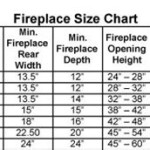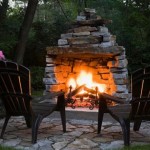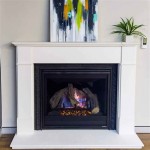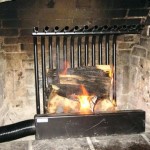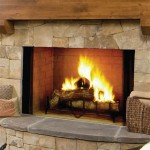Heat & Glo Gas Fireplace Won't Light: Troubleshooting Guide
A gas fireplace, particularly a Heat & Glo model, offers a convenient and efficient heating solution, as well as a visually appealing focal point for a living space. However, encountering a situation where the fireplace fails to ignite can be frustrating. This article provides a comprehensive guide to diagnosing and resolving common issues that may prevent a Heat & Glo gas fireplace from lighting.
Troubleshooting a non-lighting gas fireplace involves a systematic approach, starting with the simplest and most common causes before progressing to more complex components. Prioritizing safety is paramount; if there is any suspicion of a gas leak, it is essential to immediately evacuate the premises and contact the local gas utility or a qualified HVAC technician.
Before initiating any troubleshooting steps, it is crucial to consult the specific owner’s manual for the Heat & Glo fireplace model. The manual contains valuable information regarding the fireplace's unique features, safety precautions, and recommended maintenance procedures. Failure to adhere to the manufacturer's instructions can lead to damage to the fireplace or, more seriously, personal injury.
Ensuring Gas Supply and Basic Functionality
The most fundamental step in troubleshooting a non-lighting gas fireplace is to verify the gas supply. Confirm that the main gas valve is in the open position. This valve is typically located near the gas meter or outside the house. An improperly positioned valve will prevent gas from reaching the fireplace. Check the gas shut-off valve located near the fireplace itself, ensuring it is also in the open position. Sometimes, these valves can be accidentally bumped or turned off, preventing gas flow.
After confirming the gas supply, verify that other gas appliances in the house are functioning correctly. This helps to determine whether the issue is isolated to the fireplace or indicative of a broader gas supply problem. If other gas appliances are also not functioning, contact the gas company immediately.
Examine the pilot light assembly if the fireplace has one. A pilot light is a small, continuous flame that ignites the main burner. If the pilot light is out, follow the manufacturer's instructions in the owner’s manual for relighting it. Typically, this involves pressing and holding a control knob while simultaneously pressing the igniter button. If the pilot light fails to stay lit after releasing the control knob, the thermocouple may be faulty.
The thermocouple is a safety device that senses the heat from the pilot light and signals the gas valve to remain open. A malfunctioning thermocouple will prevent the gas valve from staying open, causing the pilot light to extinguish. A visual inspection of the thermocouple can reveal signs of damage, such as corrosion or bending. A multimeter can be used to test the thermocouple's output voltage. If the voltage is below the manufacturer's specified range, the thermocouple needs replacement.
Another component related to the pilot light is the thermopile. Thermopiles, unlike thermocouples, generate a small electrical current powerful enough to power the gas valve directly. This is common in some Heat & Glo models. Similar to a thermocouple, a faulty thermopile will prevent the gas valve from opening, resulting in no ignition. Test the thermopile with a multimeter, referring to the manufacturer's specifications for the correct voltage output.
Addressing Ignition System Issues
If the gas supply and pilot light assembly are functioning correctly, the next step is to investigate the ignition system. Heat & Glo fireplaces utilize various ignition systems, including spark igniters and hot surface igniters. A spark igniter generates a high-voltage spark to ignite the gas, while a hot surface igniter heats a silicon carbide element to a high temperature, igniting the gas upon contact.
For spark ignition systems, verify that the spark electrode is clean and properly positioned near the burner. Clean the electrode with a wire brush to remove any carbon buildup or debris. Check the wiring connections to the spark module, ensuring they are secure and free from corrosion. A faulty spark module will not generate a spark, preventing ignition. A spark tester can be used to confirm the spark module's functionality.
For hot surface ignition systems, visually inspect the igniter for any signs of damage, such as cracks or breaks. A damaged igniter will not heat up sufficiently to ignite the gas. Use a multimeter to test the igniter's resistance. An open circuit indicates a faulty igniter that needs replacement. Exercise extreme caution when handling hot surface igniters, as they can reach extremely high temperatures.
The flame sensor is another crucial component in the ignition system. The flame sensor detects the presence of a flame and signals the control module to keep the gas valve open. A dirty or faulty flame sensor can prevent the fireplace from staying lit. Clean the flame sensor with a fine steel wool or emery cloth to remove any carbon deposits. A multimeter can be used to test the flame sensor's continuity. If the flame sensor is faulty, it will need replacement.
The igniter must be correctly aligned with the burner to ensure proper ignition. Misalignment can prevent the spark or hot surface from effectively igniting the gas. Adjust the igniter's position according to the manufacturer's instructions. A properly aligned igniter will result in a consistent and reliable ignition.
Examining the Gas Valve and Control Module
If the previous steps do not resolve the issue, it is necessary to examine the gas valve and control module. The gas valve regulates the flow of gas to the burner, and the control module controls the ignition sequence and safety features. A malfunctioning gas valve or control module can prevent the fireplace from lighting.
Listen for a clicking sound from the gas valve when the fireplace is turned on. This indicates that the gas valve is receiving a signal from the control module. If there is no clicking sound, the gas valve may be faulty or not receiving a signal from the control module. Use a multimeter to test the voltage to the gas valve. If there is no voltage, the control module may be faulty.
The control module is responsible for coordinating the ignition sequence and monitoring safety features. A faulty control module can prevent the fireplace from lighting or cause it to shut down prematurely. Inspect the control module for any signs of damage, such as burnt components or loose connections. Replacing a control module often requires professional expertise due to its complexity and safety implications.
Before replacing any components, it is essential to verify that the wiring connections are secure and free from corrosion. Loose or corroded connections can disrupt the electrical signals and prevent the fireplace from functioning correctly. Clean the wiring terminals with a wire brush and apply a dielectric grease to protect against corrosion.
Gas valves can occasionally become stuck or clogged with debris. Gently tap the gas valve with a screwdriver handle to dislodge any obstructions. Be cautious not to damage the valve. If the valve remains unresponsive, replacement may be necessary. Due to the risk of gas leaks, replacing a gas valve is typically best left to a qualified technician.
It is also crucial to inspect the venting system. Blockages in the venting system can cause a buildup of carbon monoxide, a deadly gas. Ensure that the vent is clear of any obstructions, such as bird nests or debris. A blocked vent can also prevent proper drafting, which can affect the fireplace's performance and prevent it from lighting. Professional inspection of the venting system is recommended periodically to ensure its safety and integrity.

Heat N Glo Fireplace Won T Light

Heat N Glo Townsend Fireplace Won T Light Doityourself Com Community Forums

Heat Glo Gas Fireplace Troubleshooting

Heat N Glo Townsend Fireplace Won T Light Doityourself Com Community Forums

Relighting Your Heat Glo Standing Pilot Fireplace

Heat Glo Gas Log Fireplace Won T Light Hearth Com Forums Home

Heat N Glo Townsend Fireplace Won T Light Doityourself Com Community Forums

Resetting Your Heat Glo Intellifire Plus Ignition System
Heat Glo Gas Log Fireplace Won T Light Hearth Com Forums Home
Heat Glo Gas Log Fireplace Won T Light Hearth Com Forums Home


